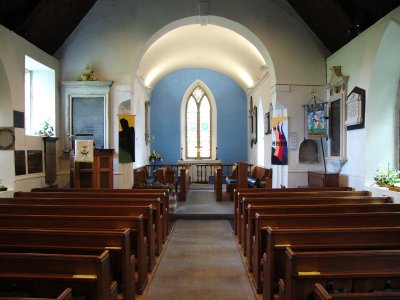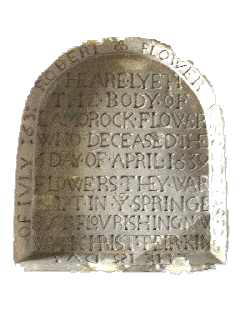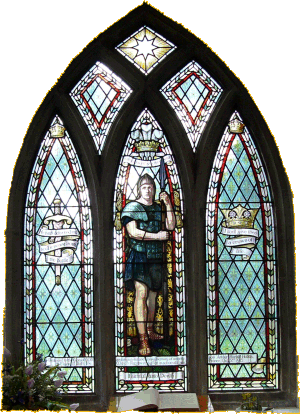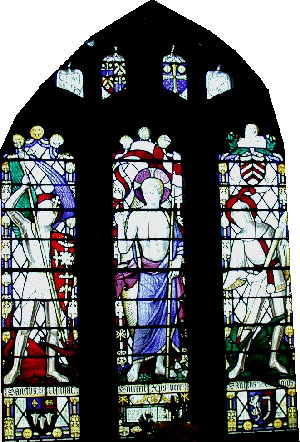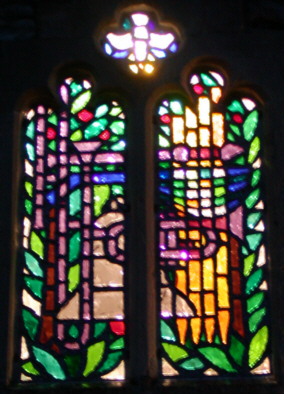St.
Mary's Church History |
||
By day . . . . . . . . . . . . . . . . . and . . . . . . . . . . . . . . . . . by night
|
||
The Font This is Norman, or perhaps Saxon. It is said that it was removed from the Church, desecrated by defacing the sculptured heads by Parliamentarian soldiers after the Battle of Lansdown and subsequently found in use as a cattle trough, before being returned to the Church and mounted on a new base. The Rector at that time was also taken away by Cromwell's men and never seen again. |
|
|
The Tower This is Saxon, thought it has been extensively repaired and the top ten feet added. The stone pinnacles are Victorian. There were once three bells: the remaining bell is dated 1820. |
||
Three memorials are of special interest: |
||
The epitaph reads Stop Reader,
and a Wonder see |
The first is a unique memorial in the Porch to the feet of one Frances Flood who, passing through the village in the 18th century, lost her feet in 1723 through gangrene after contracting smallpox. Read
her amazing story here The story of the Devonshire Woman is in the British Museum. |
|
|
Around the edge it reads, "Robert Flower who deceased the 15th of July 1631" In the centre it reads, "Heare lyeth the body of Lamorock Flower who deceased the 6 day of April 1639. Flowers they warshipt in ye Springe but flourishing now with Christ their King" |
A small fascinating tablet dated 1639 near the piano, the most interesting of many memorials to two of the local Flowers family, who lived for many years in the adjoining Manor, which is reputed to be the oldest occupied manor house in the country and is largely Norman. |
The third, a gem now covered by a carpet, in front of the altar step inscribed: 'The Rev Thomas Slater' 'Also of Charles, his son by Rachel his second wife, daughter of the Rev. Richard Barry, rector of Upton Scudamore in the county of Wilts and vicar of Bitton in ye County of Gloucester, who served as a midshipman in his majesty's navy and in the year 1783 went out with the Grand Fleet under the command of Lord Howe to the relief of Gibraltar, was a most promising youth but unfortunately lost his life by bathing in the river Avon, July 12th, 1785, aged 13 years.' |
The Bible |
||
The Gallery |
The embroidered Coat of Arms on the front of the gallery dates from soon after the Battle of Waterloo. This intricate stitch had a very brief popularity, which gives it its precise date. |
|
|
|
||
The North Wall The North Wall of the Nave was evidently rebuilt in the 13th century. |
The Windows |
|
|
||
Though this Church has stood here for so long, it has almost certainly never been so well attended as it is today. Nearly all the furnishings and decorations have been installed in this generation. The new window in the west wall of the tower is a good example of modern work, being made of a very thick tinted glass set in epoxy, representing various musical instruments. It was installed in the 1970's to commemorate Cecil Ewins, formerly organist of this church. |
|
|
